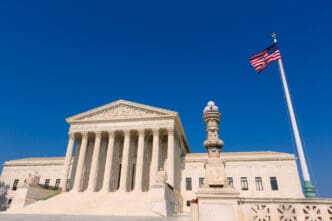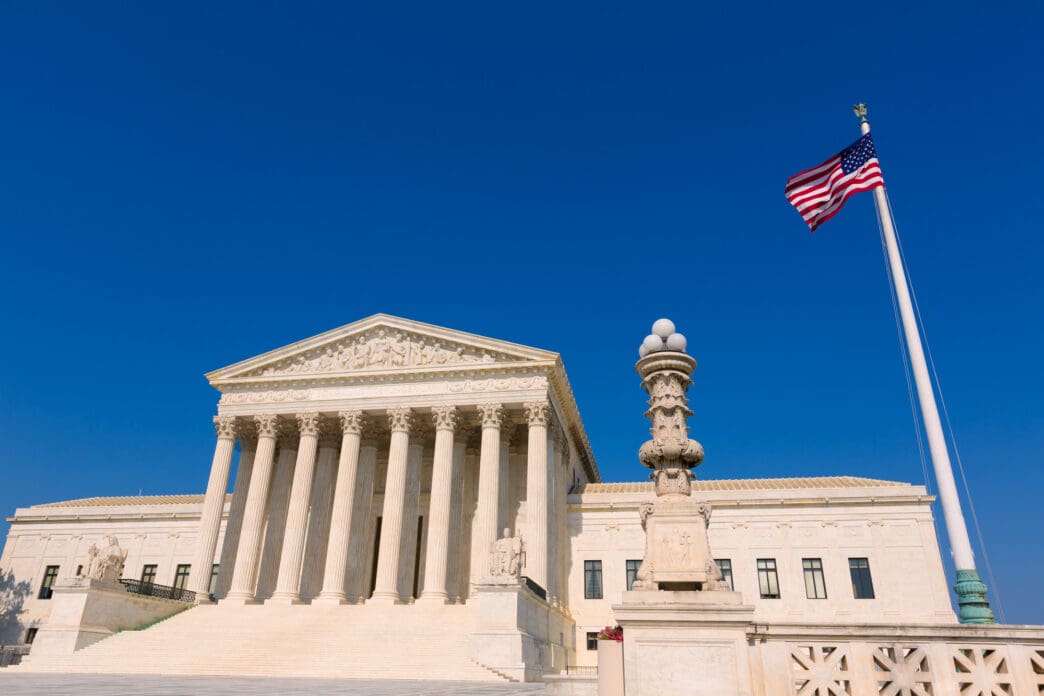Executive Summary
- The Supreme Court is set to hear President Donald Trump’s appeal regarding his administration’s tariffs, with the case hinging on the interpretation of the 1981 Dames & Moore v. Regan precedent and the International Emergency Economic Powers Act (IEEPA).
- Chief Justice John Roberts has a direct connection to the Dames & Moore case, having helped craft the opinion as a law clerk, which affirmed President Carter’s use of IEEPA but included a caution against overbroad application.
- The central legal dispute is whether IEEPA grants the President broad authority to impose tariffs as “bargaining chips” to address national emergencies, as argued by the Trump administration, or if President Trump’s tariffs exceed the act’s scope and established practice.
The Story So Far
- The Supreme Court is set to review President Donald Trump’s use of the International Emergency Economic Powers Act (IEEPA) to impose tariffs, a power generally considered to be within Congress’s purview, which most lower courts have ruled against. This case critically re-examines the 1981 Dames & Moore v. Regan precedent, which affirmed broad presidential emergency powers during the Iranian hostage crisis, and which Chief Justice John Roberts helped craft as a law clerk. The administration argues Trump’s tariffs are a legitimate “bargaining chip” under IEEPA, similar to the 1981 actions, while challengers contend this misinterprets the precedent and exceeds the law’s scope.
Why This Matters
- The Supreme Court’s decision on President Trump’s disputed tariffs will critically redefine the extent of presidential authority under the International Emergency Economic Powers Act (IEEPA), potentially setting a significant precedent for how future administrations can impose broad economic measures like tariffs during perceived national emergencies. This ruling, which revisits a 1981 case Chief Justice Roberts was involved in, carries substantial economic and political implications, as it will either validate or constrain the executive branch’s power to unilaterally influence trade, consumer prices, and international relations.
Who Thinks What?
- The Trump administration, supported by dissenting Judge Richard Taranto and Solicitor General D. John Sauer, argues that the tariffs are permissible under IEEPA, asserting that the Supreme Court’s ruling in Dames & Moore v. Regan recognized “broad authority” for the president to use measures like tariffs as a “bargaining chip” to address national emergencies, such as rectifying trade deficits or stopping criminal trafficking.
- Tariff challengers, including lead counsel Michael McConnell and economists, along with the majority of judges on the U.S. Court of Appeals for the Federal Circuit, contend that President Trump’s tariffs exceed the scope of IEEPA, arguing that Dames & Moore v. Regan does not authorize an “unprecedented, worldwide tariff regime” and that the statute’s text and established practice do not support their use, especially when the cited “emergency” (trade deficits) is not “unusual and extraordinary.”
The Supreme Court is set to hear President Donald Trump’s appeal regarding his administration’s disputed tariffs, a case that may hinge on a 1981 precedent from the Iranian hostage crisis. Chief Justice John Roberts has a direct connection to this key case, Dames & Moore v. Regan, having helped craft the opinion as a 26-year-old law clerk for then-Justice William Rehnquist.
The 1981 Precedent and IEEPA
The Dames & Moore v. Regan case arose during a period of intense urgency for the Supreme Court in June 1981. It tested the financial aspects of a deal struck by President Jimmy Carter, which used frozen Iranian assets as a bargaining chip to secure the release of 52 American hostages.
President Carter invoked the International Emergency Economic Powers Act (IEEPA), a law now cited by President Trump to justify tariffs on goods imported from countries including Canada, Mexico, and China. While the Constitution grants Congress the power to set tariffs, IEEPA, enacted in 1977, had not previously been used for this purpose.
The law authorizes the president to “regulate … importation” of goods to address a national emergency stemming from an “unusual and extraordinary threat” to U.S. national security, foreign policy, or economy.
Lower Court Rulings and Dissenting Arguments
Most judges who have reviewed President Trump’s tariffs have ruled against them. A seven-justice majority of the U.S. Court of Appeals for the Federal Circuit rejected the administration’s arguments in August, concluding that while IEEPA grants the president authority for various actions during a national emergency, the disputed tariffs exceeded that scope.
However, dissenting Judge Richard Taranto, joined by three other judges, argued that the Supreme Court has recognized “broad authority” for the president within IEEPA’s power to “regulate.” Taranto highlighted the Dames & Moore case, noting the Supreme Court “blessed the measure as a ‘bargaining chip to be used by the President when dealing with a hostile country.’” He asserted that the current tariffs similarly function as a “bargaining chip” to address issues like criminal trafficking.
The Trump administration has embraced Judge Taranto’s arguments in its appeal to the Supreme Court, defending tariffs that have generated billions for the U.S. treasury but also increased consumer prices and caused economic disruption.
Chief Justice Roberts’ Connection
Chief Justice Roberts was concluding his clerkship in Rehnquist’s chambers when Dames & Moore v. Regan arrived on the court’s docket. Rehnquist, then an associate justice, was tasked with crafting the opinion under extreme pressure, even battling viral pneumonia during the process. The justices were aiming to release all opinions by the end of June, making it a “mad scramble” for Rehnquist and his clerks, including Roberts.
The case involved nullifying court orders related to frozen Iranian assets, a requirement of the hostage deal. Dames & Moore, an engineering firm, sued the Treasury Department after its judgment against Iran was voided. The Supreme Court, facing a mid-July deadline for asset transfers, expedited the case, holding oral arguments on June 24, 1981.
Though the justices quickly voted to uphold the deal, their reasoning varied. Rehnquist, known for his efficiency, was chosen to write the opinion, which was completed and released on July 2. In his opinion, Rehnquist affirmed that President Carter had acted within congressional authority granted by IEEPA.
However, Rehnquist also cautioned that the court aimed “to lay down no general ‘guidelines’ covering other situations not involved here, and attempt to confine the opinion only to the very questions necessary to decision of the case.” This specific warning is now central to the current debate.
Interpreting Dames & Moore
The interpretation of Dames & Moore is a critical question for the current justices. One consideration will be whether President Trump’s actions violate a relatively new court doctrine requiring clear congressional authorization for presidential steps of vast “economic and political significance.”
Solicitor General D. John Sauer, defending the tariffs, cited Judge Taranto, stating that “IEEPA embodies an eyes-open congressional grant of broad emergency authority in this foreign-affairs realm.” Sauer argued the tariffs were imposed “to rectify America’s country-killing trade deficits and to stop the flood of fentanyl and other lethal drugs across our borders.”
Conversely, the tariff challengers, represented by lead counsel Michael McConnell for VOS Selections, argue that the administration misreads Dames & Moore. McConnell contends the case advises judges to pay “close attention to the IEEPA’s text and established practice,” which, he argues, would disallow an “unprecedented, worldwide tariff regime.”
Economists siding with the challengers also argue that even if IEEPA allowed tariffs, no real emergency exists, noting that trade deficits have been “ordinary and commonplace” in the U.S. for five decades, not “unusual and extraordinary.”
Legal Connections
Judge Taranto, a nominee of President Barack Obama, is recognized for his non-ideological approach on the Federal Circuit. He is also known to many justices, having clerked for Justice Sandra Day O’Connor and frequently argued before the high court. Notably, Michael McConnell, lead counsel against President Trump’s tariffs, was a study partner with John Roberts for the District of Columbia bar exam, both having clerked at the Supreme Court during the same term that Dames & Moore was decided.








